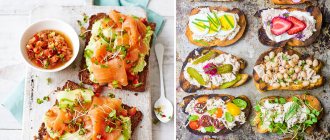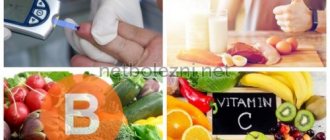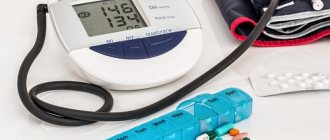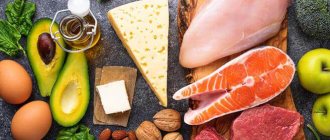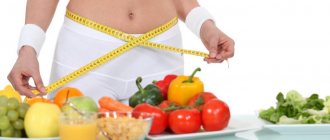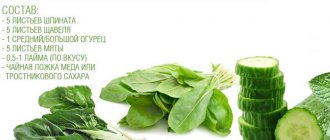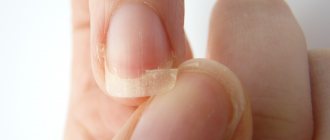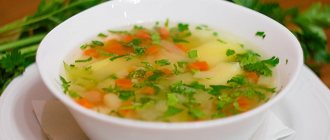General rules
A therapeutic diet is prescribed for diseases and serves specific purposes. For chronic intestinal diseases (without exacerbation or fading exacerbation) with a predominance of constipation Table No. 3 , Diet No. 3 according to Pevzner, which allows you to normalize impaired intestinal functions,
is indicated This is a physiologically complete diet with a predominance of dietary fiber and magnesium, the sources of which are vegetables, fresh fruits, dried fruits, cereals, and fermented milk drinks. The diet includes cold first courses, sweet dishes and carbonated drinks. At the same time, products that increase fermentation and rotting (fried foods), irritate the mucous membrane and stimulate the secretion of the stomach and pancreas (hot spices, horseradish, mustard, etc.) are excluded. Moderate mechanical stimulation and chemical sparing are provided.
Food is prepared mainly in uncut form, boiled in water or baked. Vegetables are recommended raw and boiled. Eating 4-6 times a day. It is important to maintain a drinking regime - 1.5 liters of free fluid per day. This is explained by the fact that the walls of the rectum, with a lack of fluid, begin to absorb water from the stool, they become hard and difficult to pass through the anal canal.
Diet No. 3 for constipation takes into account the effect of foods on the function of the colon, so the maximum includes foods that enhance its peristalsis and eliminate constipation .
Such products include:
- rich in sugars - jam, sugar, syrups, honey;
- containing salt - salted fish, salted vegetables, canned snack foods;
- with a high content of organic acids - pickled and pickled vegetables, sour fruits and juices from them, fermented milk drinks, fruit drinks;
- rich in dietary fiber - bran, legumes, dried fruits, nuts, wholemeal bread, millet, barley, buckwheat, pearl barley, oatmeal, raw vegetables;
- meat with a high content of connective tissue;
- drinks containing carbon dioxide;
- fats in free form, consumed on an empty stomach in large quantities (1-2 tbsp.) sour cream and cream (100 g or more), egg yolks;
- cold dishes (150 C), consumed on an empty stomach or as first courses for lunch - okroshka, beetroot soup, jellied meat, cold jellied dishes, as well as all drinks and ice cream. It is the difference in body temperature and the product taken that is the main factor in stimulating intestinal motility;
- kumiss and kvass, which have a double effect due to the content of organic acids and carbon dioxide;
- prone to swelling - fiber, bran, seaweed;
- sauerkraut is a source of organic acids and fiber.
These are the general principles of nutrition for constipation. If you take a more careful approach to choosing a diet, you should take into account the cause and concomitant diseases of the digestive system:
- If constipation occurs in healthy people due to a sedentary lifestyle, long-term gentle nutrition, but there are no diseases of the digestive system, the general Table No. 15 , but with an increased content of laxative products.
- If constipation occurs against the background of exacerbation of chronic intestinal diseases, the gentle Table No. 4B , and then No. 4B . They exclude coarse fiber and include non-coarse peristalsis stimulants (cold sweet drinks on an empty stomach, vegetable juices, pureed beets, plums, carrots, cauliflower with the addition of vegetable oil, baked apples, kefir).
- Diet No. 5 is indicated , but with an increase in dietary fiber and magnesium (buckwheat, pearl barley, oatmeal, bran and grain bread, millet, vegetable and fruit juices, natural vegetables, fruits, honey).
- In case of peptic ulcer disease and the presence of constipation, the main therapeutic food will be Table No. 1 , but also with an increase in vegetables only in the form of puree, finely chopped and always boiled (carrots, beets, zucchini), well-cooked dried fruits, vegetable oil.
Diet number 3 for constipation in children is not much different from that in adults, but has its own characteristics, which will be discussed in a special section below.
Useful food elements and their sources
For normal development of the body, it is necessary to maintain a certain ratio between the amount of proteins, fats and carbohydrates. The normal ratio for a child 3-5 years old is 1:1:4.
Squirrels
Proteins are the material from which body cells are built. They are broken down into individual amino acids, from which new tissue cells are created. The so-called essential amino acids are not found in the human body; they can only be obtained from the outside.
If there is not enough protein in a child’s body, then he cannot grow and develop normally and will be susceptible to infections and colds. In order for a 3-5 year old child’s body to have enough protein, he must eat meat, fish, vegetables, cereals, and eggs. A lot of vegetable protein is found in peas, beans and other legumes.
Fats
Fats are the body's store of nutrients and energy. The fat layer protects organs from damage. Fats are part of the cell membrane and play an important role in the formation of hormones and ensuring the body's immune defense.
They are necessary for the accumulation of fat-soluble vitamins in the body: A - accelerates the process of formation of new cells; E - promotes the development of the blood vessel system and the creation of nerve cells; D - without it, normal bone formation and tooth growth are impossible; K - promotes the development of bone and muscle tissue, the functioning of the digestive system.
Sources of fat for a child are meat, fish, butter and vegetable oil, milk and dairy products. The digestive system of children of these years is not adapted to digest heavy foods (fatty pork, goose). You need to add butter to your food and give them full-fat milk. Low-fat yogurt and kefir not only will not save you from obesity, but can have the opposite effect, as they contain a lot of calories due to sugar. Natural dairy products that do not contain food additives or dyes are much healthier.
Note: Parents who want to save their children from cholesterol should know that an excess of this substance is harmful to an elderly body, and for a 3-year-old child it is simply necessary, since it is part of the cell membranes of various tissues.
Carbohydrates
When carbohydrates are broken down in the body, energy is released. Since carbohydrates are broken down faster than other nutritional components, they are the main source of energy necessary for metabolism and other processes in the body. In order for a 3-year-old child to be active and mobile, he needs to be given foods containing a lot of carbohydrates: fruits and vegetables, bread, cereals, pasta, confectionery.
Vitamins
Vitamins accelerate all biochemical processes in the body, without them it is impossible to carry out digestion and assimilation of useful substances, as well as nourish the cells of the brain, heart, blood vessels, and bones. In addition to fat-soluble vitamins, there are also water-soluble vitamins that are easily excreted and require constant replenishment in the body. With a lack of vitamins, a child often gets sick, is susceptible to infectious diseases, grows poorly, develops mentally, has poor memory, and cannot concentrate. Sources of water-soluble vitamins are plants, so you need to eat more fruits and vegetables. Vitamins are contained in cereal plants, so it is useful to eat porridge.
Recommendation: To ensure that your child’s diet is varied, it is convenient to create a menu in advance. Dishes should be lightly salted. Salt is necessary to maintain metabolism and improve the taste of foods. Spices and hot seasonings are excluded from the children's diet.
Essential minerals and their sources
For the normal development and functioning of various organs, the diet of a 3-5 year old child should include foods containing various micro- and macroelements:
- Calcium (for normal formation of the skeleton and teeth). Its sources are milk, cheese, as well as rice, peas, and nuts.
- Phosphorus (for the formation of teeth, the formation of enzymes, and fat metabolism). Contained in fish, meat, eggs, nuts.
- Magnesium (necessary for heart function). It is found in nuts, cereals, cocoa, bananas, plums, dried apricots, and salmon fish.
- Iron (the level of hemoglobin in the blood and the supply of oxygen to the body’s tissues depend on it). The main suppliers to the body are meat (especially liver), as well as fish.
- Zinc (part of enzymes, involved in the formation of gene structures). Contained in fish and seafood, unrefined cereals, eggs.
- Iodine (without it, the formation of thyroid hormones, on which the mental state and physical development of the child depends, is impossible). The main source is fish and seafood.
- Selenium (part of hormones and antioxidants). The main sources are fish, corn, tomatoes, garlic.
- Potassium (necessary for the functioning of the brain, nervous system, muscle function). Contained in green vegetables, citrus fruits, potatoes, dried apricots, and nuts.
- Sodium (maintains normal fluid levels in the body). It enters the body through consumption of table salt, meat, carrots, and beets.
Authorized Products
Dietary Table No. 3 includes almost all vegetables: beets, carrots, lettuce, cucumbers, tomatoes, pumpkin, zucchini, cauliflower, which can be used raw, stewed and boiled for side dishes, as well as in the form of casseroles. If tolerated well, dishes made from white cabbage and green peas are allowed, but boiled. You can eat vinaigrettes with vegetable oil, vegetable caviar, and seaweed. Due to its swelling properties, it is useful for constipation. It can be consumed dried in powder form or finely chopped 1-3 tsp. per day, soaked in water. Salads and canned seaweed are also recommended.
The first courses are prepared in a weak and low-fat meat/fish broth. Based on the fact that you need to get more fiber, you should prepare mainly vegetable first courses (kholodniki, borscht, cabbage soup, beetroot soup), as well as soups with the addition of pearl barley. Choose lean meats, chicken, turkey - they are easier to digest and “leave” the intestines than heavy fatty meat. Meat dishes are prepared boiled or baked. The same goes for fish.
It should be noted that any meat is a difficult-to-digest product and its daily consumption is undesirable, as many note increased constipation . In this case, you should give preference to fish among protein products, and devote 1-2 days a week to meat. From buckwheat, pearl barley, millet, barley, and wheat cereals, crumbly porridges, casseroles and porridges with the addition of milk are prepared. Equally important is the correct method of cooking food. Fish and meat should be cooked in pieces, and porridges should be crumbly ("smear porridges", including mashed potatoes, are excluded).
Fermented milk drinks contain large quantities of organic acids , so the following are useful for constipation : Varenets, kefir, yogurt, matsoni, kumiss, acidophilus yogurt and they should be present in the diet daily. Milk is only allowed in dishes. Fresh cottage cheese and dishes made from it are welcome: puddings, casseroles with added cereals, lazy dumplings.
Cream, mild cheese in small quantities and sour cream are allowed in dishes. You can eat up to 2 eggs a day and cook them in the form of steam omelettes, omelettes with vegetables, and soft-boiled.
The diet should contain unlimited quantities of fresh sweet fruits and berries, soaked dried fruits in their natural form and in dishes, fruits containing plant fiber and sugar (dried apricots, prunes, apricots, figs). The following sweets are allowed: jam, honey, marshmallow, marmalade, milk caramel. Wheat bread is allowed, but made from second grade flour, grain bread, doctor's bread, and if tolerated well, rye bread is allowed. All bread products must be yesterday's baked goods.
You can use unsweetened cookies (biscuits) and dry biscuits. Carbonated fruit and berry drinks and sparkling mineral waters, weak tea, coffee substitutes, bran decoction, rose hip decoction, plum, apricot, carrot, beetroot, tomato and other juices are allowed.
Table of permitted products
| Proteins, g | Fats, g | Carbohydrates, g | Calories, kcal | |
Vegetables and greens | ||||
| zucchini | 0,6 | 0,3 | 4,6 | 24 |
| cabbage | 1,8 | 0,1 | 4,7 | 27 |
| sauerkraut | 1,8 | 0,1 | 4,4 | 19 |
| cauliflower | 2,5 | 0,3 | 5,4 | 30 |
| carrot | 1,3 | 0,1 | 6,9 | 32 |
| pickles | 0,8 | 0,1 | 1,7 | 11 |
| beet | 1,5 | 0,1 | 8,8 | 40 |
| tomatoes | 0,6 | 0,2 | 4,2 | 20 |
| pumpkin | 1,3 | 0,3 | 7,7 | 28 |
Fruits | ||||
| apricots | 0,9 | 0,1 | 10,8 | 41 |
| watermelon | 0,6 | 0,1 | 5,8 | 25 |
| bananas | 1,5 | 0,2 | 21,8 | 95 |
| melon | 0,6 | 0,3 | 7,4 | 33 |
| nectarine | 0,9 | 0,2 | 11,8 | 48 |
| peaches | 0,9 | 0,1 | 11,3 | 46 |
| plums | 0,8 | 0,3 | 9,6 | 42 |
| apples | 0,4 | 0,4 | 9,8 | 47 |
Nuts and dried fruits | ||||
| dried figs | 3,1 | 0,8 | 57,9 | 257 |
| dried apricots | 5,2 | 0,3 | 51,0 | 215 |
| dried apricots | 5,0 | 0,4 | 50,6 | 213 |
| prunes | 2,3 | 0,7 | 57,5 | 231 |
Cereals and porridges | ||||
| buckwheat (kernel) | 12,6 | 3,3 | 62,1 | 313 |
| oat groats | 12,3 | 6,1 | 59,5 | 342 |
| corn grits | 8,3 | 1,2 | 75,0 | 337 |
| pearl barley | 9,3 | 1,1 | 73,7 | 320 |
| wheat bran | 15,1 | 3,8 | 53,6 | 296 |
| millet cereal | 11,5 | 3,3 | 69,3 | 348 |
| barley grits | 10,4 | 1,3 | 66,3 | 324 |
Bakery products | ||||
| oatmeal bread | 10,1 | 5,4 | 49,0 | 289 |
| Rye bread | 6,6 | 1,2 | 34,2 | 165 |
| bran bread | 7,5 | 1,3 | 45,2 | 227 |
| doctor's bread | 8,2 | 2,6 | 46,3 | 242 |
| whole grain bread | 10,1 | 2,3 | 57,1 | 295 |
Confectionery | ||||
| jam | 0,3 | 0,2 | 63,0 | 263 |
| jelly | 2,7 | 0,0 | 17,9 | 79 |
| marshmallows | 0,8 | 0,0 | 78,5 | 304 |
| milk candies | 2,7 | 4,3 | 82,3 | 364 |
| fondant candies | 2,2 | 4,6 | 83,6 | 369 |
| fruit and berry marmalade | 0,4 | 0,0 | 76,6 | 293 |
| paste | 0,5 | 0,0 | 80,8 | 310 |
| Maria cookies | 8,7 | 8,8 | 70,9 | 400 |
| oatmeal cookies | 6,5 | 14,4 | 71,8 | 437 |
Raw materials and seasonings | ||||
| honey | 0,8 | 0,0 | 81,5 | 329 |
| sugar | 0,0 | 0,0 | 99,7 | 398 |
Dairy | ||||
| milk | 3,2 | 3,6 | 4,8 | 64 |
| kefir | 3,4 | 2,0 | 4,7 | 51 |
| cream | 2,8 | 20,0 | 3,7 | 205 |
| sour cream | 2,8 | 20,0 | 3,2 | 206 |
| curdled milk | 2,9 | 2,5 | 4,1 | 53 |
| kumiss | 3,0 | 0,1 | 6,3 | 41 |
| acidophilus | 2,8 | 3,2 | 3,8 | 57 |
| yogurt | 4,3 | 2,0 | 6,2 | 60 |
Cheeses and cottage cheese | ||||
| cottage cheese | 17,2 | 5,0 | 1,8 | 121 |
Meat products | ||||
| beef | 18,9 | 19,4 | 0,0 | 187 |
| beef liver | 17,4 | 3,1 | 0,0 | 98 |
| beef tongue | 13,6 | 12,1 | 0,0 | 163 |
| veal | 19,7 | 1,2 | 0,0 | 90 |
| rabbit | 21,0 | 8,0 | 0,0 | 156 |
Bird | ||||
| chicken | 16,0 | 14,0 | 0,0 | 190 |
| turkey | 19,2 | 0,7 | 0,0 | 84 |
Eggs | ||||
| chicken eggs | 12,7 | 10,9 | 0,7 | 157 |
Fish and seafood | ||||
| herring | 16,3 | 10,7 | — | 161 |
Oils and fats | ||||
| butter | 0,5 | 82,5 | 0,8 | 748 |
| corn oil | 0,0 | 99,9 | 0,0 | 899 |
| olive oil | 0,0 | 99,8 | 0,0 | 898 |
| sunflower oil | 0,0 | 99,9 | 0,0 | 899 |
Non-alcoholic drinks | ||||
| mineral water | 0,0 | 0,0 | 0,0 | — |
| instant chicory | 0,1 | 0,0 | 2,8 | 11 |
| black tea with milk and sugar | 0,7 | 0,8 | 8,2 | 43 |
Juices and compotes | ||||
| apricot juice | 0,9 | 0,1 | 9,0 | 38 |
| carrot juice | 1,1 | 0,1 | 6,4 | 28 |
| plum juice | 0,8 | 0,0 | 9,6 | 39 |
| tomato juice | 1,1 | 0,2 | 3,8 | 21 |
| pumpkin juice | 0,0 | 0,0 | 9,0 | 38 |
| rose hip juice | 0,1 | 0,0 | 17,6 | 70 |
| * data is per 100 g of product | ||||
Diet recipes No. 3
Vinaigrette with vegetable oil.
Ingredients: 10 g vegetable oil, 20 g apples, 30 g pickles, 30 g beets, 30 g carrots, 30 g potatoes. Boil carrots, beets and potatoes, peel and chop. Mix vegetables, finely chopped apples and pickled cucumber, previously peeled. Drizzle with vegetable oil and salt.
Salad of cucumbers, tomatoes, herbs and sweet peppers.
Ingredients: 10 g olive oil, 10 g dill and parsley, 30 g green salad leaves, 30 g sweet bell pepper, 30 g fresh cucumbers, 50 g tomatoes. Cut the cucumbers into slices, tomatoes into slices, bell peppers into cubes, finely chop dill, parsley and lettuce leaves. Mix all ingredients, season with olive oil and salt.
Beet salad with vegetable oil.
Ingredients: 10 g vegetable oil, 120 g beets. Wash the beets thoroughly, boil, cool, peel and cut into strips. Pour vegetable oil over the salad and add salt.
Fully or partially limited products
Dishes containing tannins are excluded - these are jelly from quince, pears, bird cherry, blueberry, dogwood, strong tea, cocoa and coffee. Dishes that have a viscous consistency and move slowly through the intestines are slimy soups, mashed potatoes, mashed porridges and jelly. Chocolate and any products with cream are also not allowed. It is worth excluding bread made from premium flour, as well as baked goods made from yeast dough and puff pastry. Unsavory baked goods should be consumed sparingly.
Difficult to digest and remain in the stomach for a long time are: fatty types of meat (duck, goose) and fish, canned food, smoked meats, hard-boiled and fried eggs. They must be excluded from the diet. Spicy dishes, sauces, horseradish and mustard greatly irritate the mucous membranes and disrupt the function of the entire gastrointestinal tract. You should limit foods that cause constipation - rice, semolina, noodles, sago, vermicelli, potatoes, as well as legumes, which may be poorly tolerated.
Table of prohibited products
| Proteins, g | Fats, g | Carbohydrates, g | Calories, kcal | |
Vegetables and greens | ||||
| potato | 2,0 | 0,4 | 18,1 | 80 |
| radish | 1,2 | 0,1 | 3,4 | 19 |
| white radish | 1,4 | 0,0 | 4,1 | 21 |
| turnip | 1,5 | 0,1 | 6,2 | 30 |
| horseradish | 3,2 | 0,4 | 10,5 | 56 |
| garlic | 6,5 | 0,5 | 29,9 | 143 |
Fruits | ||||
| quince | 0,6 | 0,5 | 9,8 | 40 |
| dogwood | 1,0 | 0,0 | 10,5 | 44 |
Berries | ||||
| blueberry | 1,1 | 0,4 | 7,6 | 44 |
Mushrooms | ||||
| mushrooms | 3,5 | 2,0 | 2,5 | 30 |
Cereals and porridges | ||||
| semolina | 10,3 | 1,0 | 73,3 | 328 |
| rice | 6,7 | 0,7 | 78,9 | 344 |
| sago | 1,0 | 0,7 | 85,0 | 350 |
Flour and pasta | ||||
| pasta | 10,4 | 1,1 | 69,7 | 337 |
| noodles | 12,0 | 3,7 | 60,1 | 322 |
Bakery products | ||||
| wheat bread | 8,1 | 1,0 | 48,8 | 242 |
Confectionery | ||||
| pastry cream | 0,2 | 26,0 | 16,5 | 300 |
Chocolate | ||||
| chocolate | 5,4 | 35,3 | 56,5 | 544 |
Raw materials and seasonings | ||||
| mustard | 5,7 | 6,4 | 22,0 | 162 |
| mayonnaise | 2,4 | 67,0 | 3,9 | 627 |
Meat products | ||||
| pork | 16,0 | 21,6 | 0,0 | 259 |
| salo | 2,4 | 89,0 | 0,0 | 797 |
Sausages | ||||
| dry-cured sausage | 24,1 | 38,3 | 1,0 | 455 |
Bird | ||||
| smoked chicken | 27,5 | 8,2 | 0,0 | 184 |
| duck | 16,5 | 61,2 | 0,0 | 346 |
| smoked duck | 19,0 | 28,4 | 0,0 | 337 |
| goose | 16,1 | 33,3 | 0,0 | 364 |
Fish and seafood | ||||
| smoked fish | 26,8 | 9,9 | 0,0 | 196 |
| canned fish | 17,5 | 2,0 | 0,0 | 88 |
Oils and fats | ||||
| animal fat | 0,0 | 99,7 | 0,0 | 897 |
| cooking fat | 0,0 | 99,7 | 0,0 | 897 |
Non-alcoholic drinks | ||||
| instant coffee dry | 15,0 | 3,5 | 0,0 | 94 |
| black tea | 20,0 | 5,1 | 6,9 | 152 |
Juices and compotes | ||||
| jelly | 0,2 | 0,0 | 16,7 | 68 |
| * data is per 100 g of product | ||||
Chemical composition and energy value of dietary table No. 3
Proteins: 90–100 g (45% animal proteins). Fats: 80–90 g (30% vegetable fats). Carbohydrates: 350–400 g (no more than 40 g of simple carbohydrates). Daily calorie content: 2,300 – 2,500 kcal. Free liquid: 1.5–2 l. Table salt: 8–10 g. Vitamins: retinol (A) – 2 mg, riboflavin (B2) – 4 mg, thiamine (B1) – 4 mg, nicotinic acid (B3) – 30 mg, ascorbic acid (C) – 100 mg. Macroelements: calcium 0.8 g, magnesium 0.5 g, phosphorus 1.2 g. Microelements: iron – 15 mg. Optimal food temperature: 15–65 degrees Celsius.
Table Menu number 3 (Power Mode)
Based on the above, taking into account the recommended products, we present the menu for the week. It does not indicate, but you should remember to take water with honey, juices with pulp, dried fruit compote, prune infusion or rosehip decoction on an empty stomach every day. All these drinks should be at room temperature.
At night, use kefir with the addition of 1 tbsp. wheat bran. Depending on your condition, you can regulate the amount of prunes eaten and bran added to dishes - increase or decrease them. When taking additional bran, do not forget to follow the drinking regime - if there is not enough water, bran can have the opposite effect.
Healing water with a high content of magnesium “ Donat Mg ” will help solve the problem of constipation. This is medicinal water, so take it in doses: 300 ml on an empty stomach and 150 ml at night for 1-1.5 months (take five days - two days off), you need to drink in one gulp.
Monday
| Breakfast |
|
| Lunch |
|
| Dinner |
|
| Dinner |
|
| For the night |
|
Tuesday
| Breakfast |
|
| Lunch |
|
| Dinner |
|
| Dinner |
|
| For the night |
|
Wednesday
| Breakfast |
|
| Lunch |
|
| Dinner |
|
| Dinner |
|
| For the night |
|
Thursday
| Breakfast |
|
| Lunch |
|
| Dinner |
|
| Dinner |
|
| For the night |
|
Friday
| Breakfast |
|
| Lunch |
|
| Dinner |
|
| Dinner |
|
| For the night |
|
Saturday
| Breakfast |
|
| Lunch |
|
| Dinner |
|
| Dinner |
|
| For the night |
|
Sunday
| Breakfast |
|
| Lunch |
|
| Dinner |
|
| Dinner |
|
| For the night |
|
Recipes for every day diet Table No. 3 for constipation, hemorrhoids, gastrointestinal diseases for adults
We bring to your attention several original recipes that can be prepared with diet No. 3, as well as if you simply adhere to a healthy diet.
Pumpkin porridge
The following products will be required:
- Small pumpkin
- millet
- raisin
- milk
- salt/sugar
- butter
Cooking will not take much time:
- Cut off the top of a ripe pumpkin under the cap, remove the core with seeds
- Place millet, milk, raisins, sugar, salt and butter inside, mix everything, close with a lid
- Place it in a bowl, pour about 1cm of water into the container and put it in the oven for an hour and a half at a temperature of 160-180C
A large number of permitted products will allow you to prepare delicious dishes - it’s just important to choose the right combination
Zucchini soup
To prepare vitamin puree soup, you need to cook vegetable broth . To do this, they use edible pieces of various vegetables: stalks, leaves, and sometimes seeds. They are washed in cold water and then cooked over low heat until tender.
Next, prepare the puree as follows:
- cut the zucchini into cubes and cook in the broth until tender
- rub through a sieve or grind in a blender
- add flour, salt, bring to a boil (cook for a couple of minutes)
- Before serving, garnish with herbs and sour cream
Marinated fish
You need:
- Cod fillet (900 g)
- 1.tbsp. lemon juice
- 2 onions
- 70 ml. table vinegar
- carrot
- 300 g tomato puree
- salt, sugar, vegetable oil
Cooking delicious and dietary cod:
- Cut the fillet into portions, grate the carrots on a coarse grater and thinly slice the onion;
- Fry carrots and onions until soft in a common frying pan, then add tomato puree.;
- Simmer the vegetables over low heat for about 10 minutes, then add a glass of water, vinegar, salt, sugar and pepper. Keep on fire for a few more minutes;
- While the marinade is preparing, brown the fish on all sides;
- Place the fish in a wide dish with small sides, pour hot marinade over it evenly and put it in the refrigerator, after cooling.
The dish will be ready for tasting after it has cooled completely.
Salad "Pastel"
- Grate beets, carrots, celery and white cabbage on a coarse grater
- Stir, but do not add salt or oil
- This salad has a laxative effect, so it is not recommended for consumption before bed or work.
For children
The most common cause of constipation in children is the functional characteristics of the intestine - a slowdown in its peristalsis, which helps push through feces. They, accumulating in the large intestine, gradually expand and lengthen it, causing functional megacolon (large colon).
With constipation, it becomes difficult for a child to defecate outside the home, and he suppresses the urge. This creates a vicious circle that makes the situation worse. Therefore, by any means necessary, you need to achieve daily independent bowel movements and develop the habit of emptying your bowels in the morning.
Prune drink
Prevention of chronic constipation begins in infancy, when complementary feeding begins. Vegetable and fruit purees (apple, plum), a variety of cereals, grated beets and beet juice, and zucchini should be introduced into the diet in a timely manner. It is no longer possible to force a grown-up child to eat a serving of salad or boiled beets; many also refuse to eat prunes, not to mention drinking a spoonful of vegetable oil on an empty stomach. Therefore, you need to proceed from what is more acceptable for the child and feasible.
In addition to the generally accepted diet, during the day you need to include foods that stimulate peristalsis:
- On an empty stomach, give a cold sweet drink - rosehip infusion, water with honey, prune infusion.
- During the day, as a snack, offer vegetable and fruit juices, vegetable decoctions, prune decoction, carrot and beet puree. If it is difficult to give them to your child, try mixing in grated apple, chopped plums or sweet berries and fruits that your child likes. He might like a puree of boiled dried fruits, which can be served with ice cream or whipped egg whites (cream).
- It must be remembered that the same product can have the opposite effect. Thus, raw apple purees have a strengthening effect, and whole apples with skin, on the contrary, accelerate bowel movements. Fat (5-10 g) in free form has a laxative effect, and the same amount of it in dishes, distributed throughout the day at all meals, has little effect on peristalsis.
A change in the composition of the intestinal microflora causes constipation, and given that children often get sick and are prescribed antibiotics , this only makes the situation worse. Fermented milk drinks - live yoghurts and acidophilic products - will help normalize the intestinal microflora. Learn to make kefir with bifidobacteria , and you will always have “one-day” kefir - this is what you should take for constipation.
If a child experiences increased fermentation in the intestines, it must be taken into account that it is caused by excess carbohydrates and foods high in dietary fiber if they are consumed raw and not boiled and mashed. These processes can be influenced by changing the technology for preparing vegetable dishes.
It is of great importance to adhere to the eating regimen, which contributes to the smooth functioning of the intestines. In this regard, children attending preschool institutions are in an advantageous position. Increasing mobility of the child, proper nutrition and regular meals most often eliminate constipation. But if all the measures you have taken have been exhausted, contact a pediatric proctologist.
Advantages and disadvantages
| pros | Minuses |
|
|
Reviews and results
The effectiveness of this therapeutic nutrition has been appreciated by many. The reviews and results of its compliance are only positive. The diet is easy to implement in everyday life, and even when visiting at a holiday table, you can choose suitable dishes. Everyone notes that they easily adapted to it and try to follow the main principle of nutrition - not to overload the gastrointestinal tract with an abundance of fatty and indigestible foods, to combine foods correctly (vegetables-protein, carbohydrates-vegetables) and focus on vegetable and fruit dishes. Here are some reviews that confirm this.
- “... I have suffered from constipation since I was 20, and in my youth I did not attach any importance to it. With age, the problem only worsened and hemorrhoids and fissures appeared. Now dietary nutrition is simply necessary, otherwise the fissure worsens every month and causes terrible pain. The diet helps a lot and I even lost weight from eating this way because I eliminated bread, pastries, potatoes and pasta. Prunes help me well (I buy a kilogram or more for myself), pumpkin porridge, and I add beets to all salads. But this must be done constantly”;
- “... For a long time I saved myself with laxative suppositories - they help, but you can’t use them all the time, now I try to watch my diet, and I also drink a lot of water. This really helps - within 4 days you can improve your bowel movements, but you need to eat this way all the time. It doesn’t bother me, I’ve already adapted and love the salad with beets and seaweed”;
- “... I have long adapted to this diet - flour products, meat in large quantities and products with dough are really strong. I excluded all this, and meat only once a week. I accustomed myself to drinking kefir with bran at night and eating 2 prunes three times a day. Be sure to have boiled beets on the table every day”;
- “... On this diet, stool is restored within a week, but I add a spoonful of vegetable oil to kefir. I am not lazy, and every day I do special exercises - light and not burdensome. I have already adopted this diet and try to more or less stick to it on business trips. You can always order vegetable salads and baked fish or meat. And I take dried fruits with me - they help a lot.”
Laxative drinks: recipes
There are several options for using beets as a laxative:
- In raw form. A panicle salad is prepared from it. Cabbage, celery, carrots and beets are added to it. Fill with oil.
- Boiled beets. It can be added to a variety of salads and vinaigrettes. Perfectly weakens salad with beets and prunes.
- Beetroot juice. It can be used in an enema. To do this, it is mixed in a 1:2 ratio and a cleansing enema is performed.
Beets as a laxative
Laxative salad
How to take it:
- Raw beets. It has a rich supply of dietary fiber, which makes the intestines work actively. You can eat whole or grated beets; they have a fairly pleasant taste.
- Boiled beets. Surprisingly, this root vegetable, even after cooking and exposure to high temperatures, does not change its chemical composition and therefore the properties of boiled beets are exactly the same as those of raw ones.
- Beetroot juice. It is useful to drink regularly to normalize stool.
